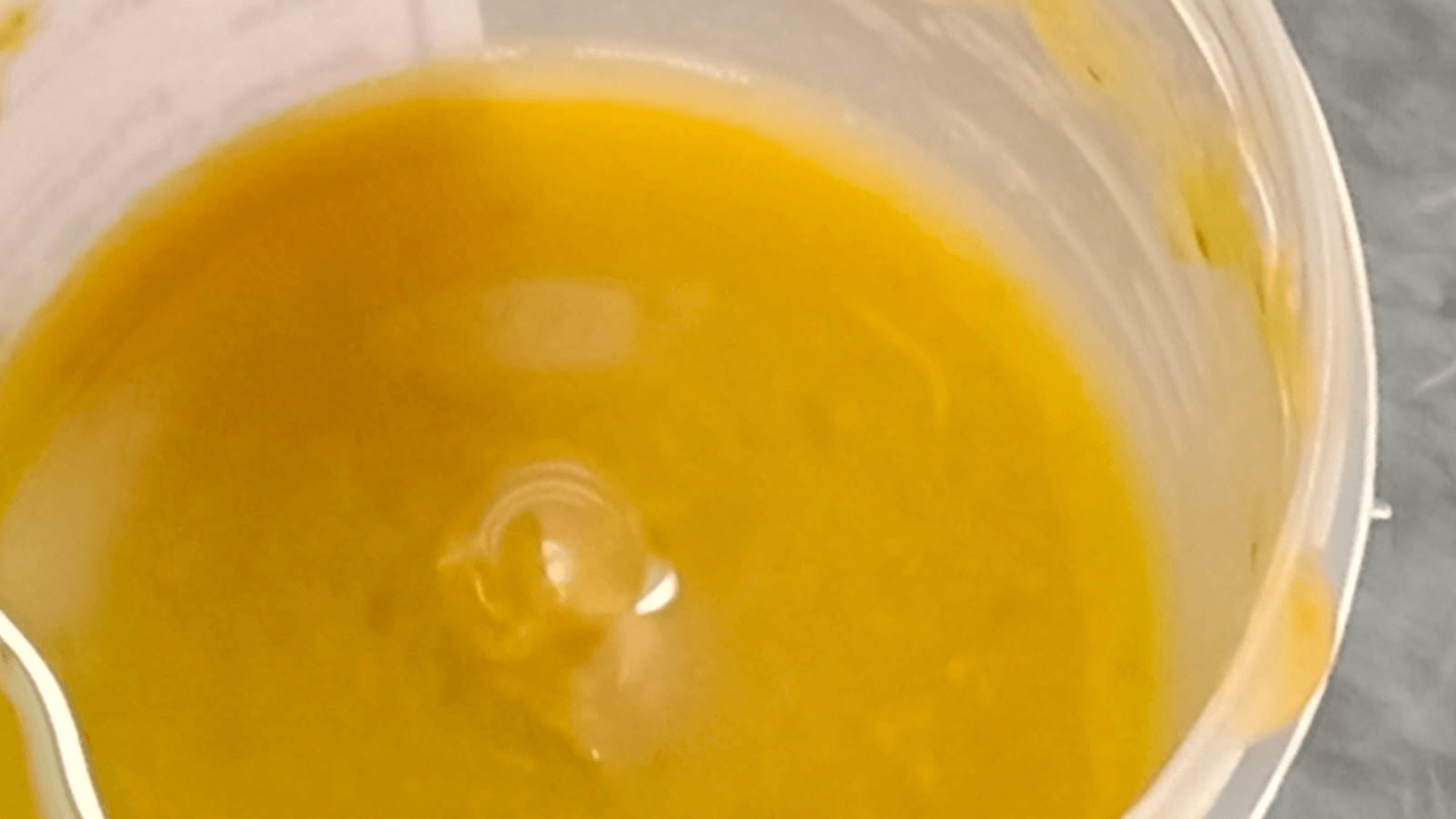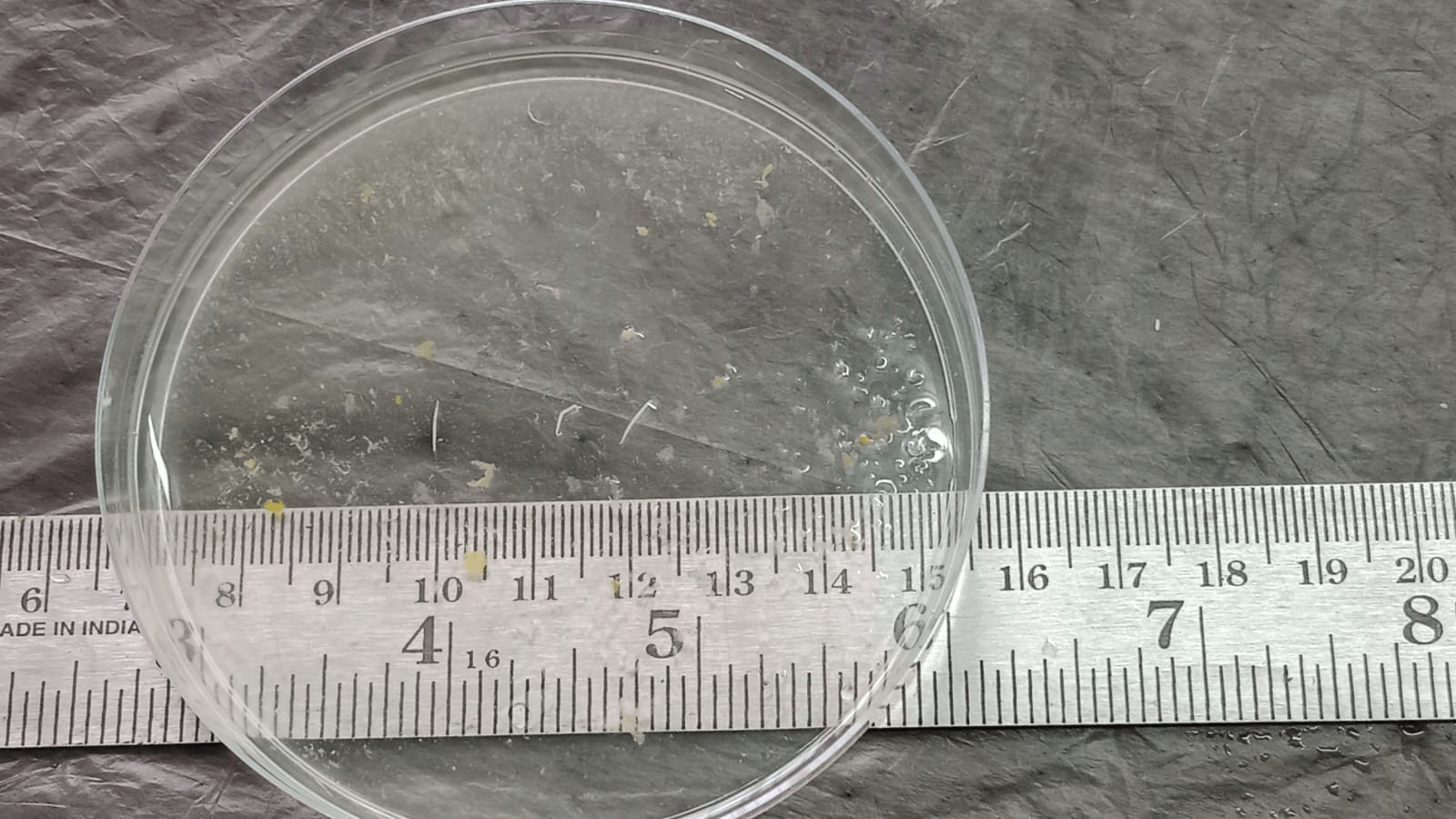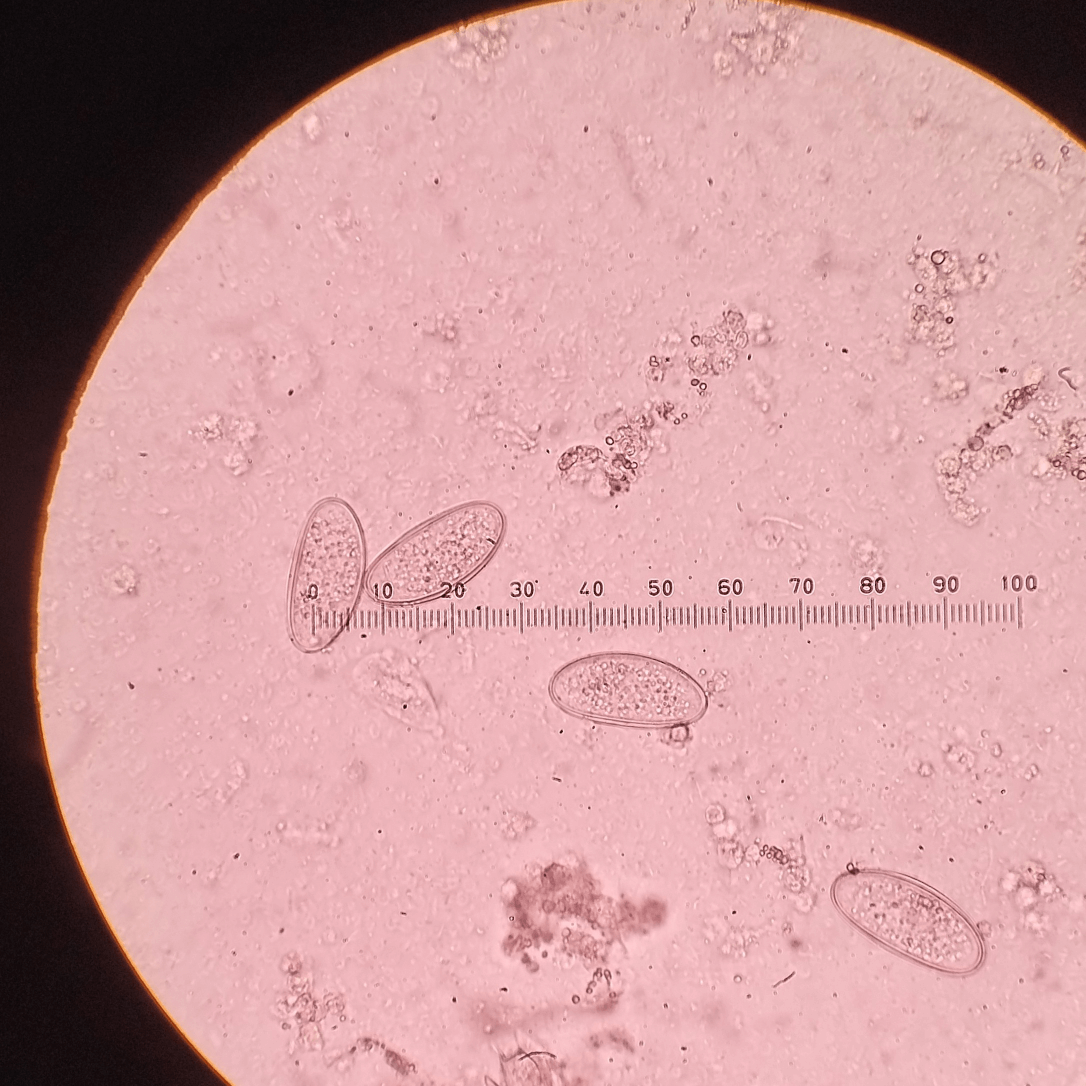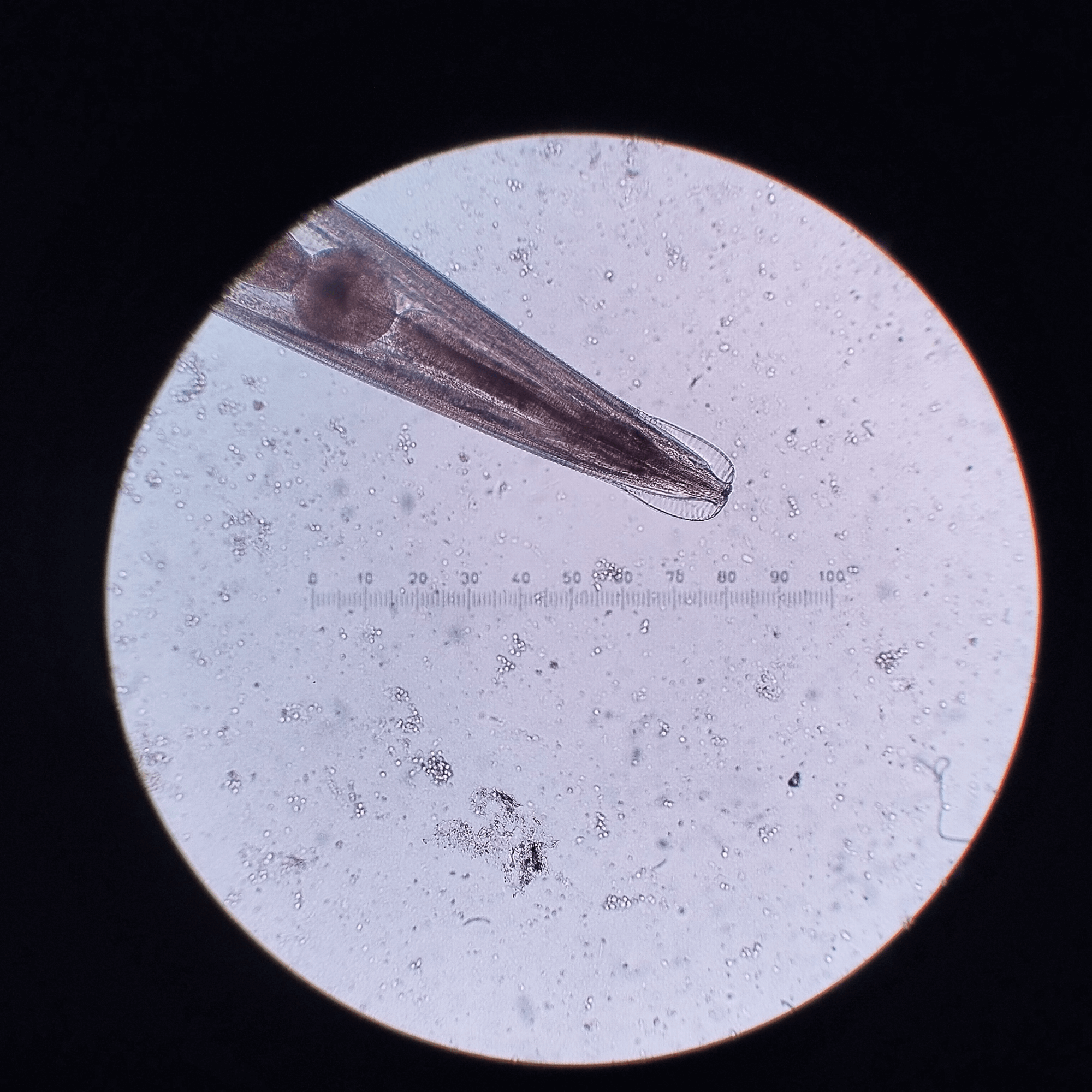Year
A 4-year-old girl experienced perianal itching for the past few weeks with worsening at night. She had recently started school, was up to date on her immunizations and her medical history was otherwise unremarkable. O/E well-nourished with mild pallor, no fever; perianal region had marked excoriations and redness. Microscopy for stool parasites sent. Identify – what treatment and advice is to be given?





Case answer – Posted on: 11-Oct-2023
- Macroscopic and microscopic examination of stool sample showing Enterobius vermicularis adult worm (a, b, d, e) and eggs (c). Adult worms are 8-13 millimeters in length, slender, whitish (b), with a pointed, tapered tail (e, 4X magnification) and wing-like extensions anteriorly called alae (d, 40X magnification). Planoconvex, thin, colorless eggs of the E. vermicularis (c, 40X magnification) measure around 50 to 60 micrometers in length and 20 to 30 micrometers in width.
- Treated with Albendazole 400 mg single dose as 10 ml oral suspension. Other treatment options are Mebendazole, pyrantel pamoate.
- All close contacts should be advised to take the medication simultaneously to prevent potential reinfection. The child’s caregiver should be instructed to practice good hygiene, including regular handwashing, trimming fingernails short, and ensuring daily bathing to reduce the risk of autoinfection. Additionally, the child’s bedding, clothing, and towels should be washed in hot water. The mother should be educated about pinworm infections, including their common mode of transmission and prevention strategies. She should be advised to inform child’s school about the infection so that appropriate measures could be taken to prevent spread.
